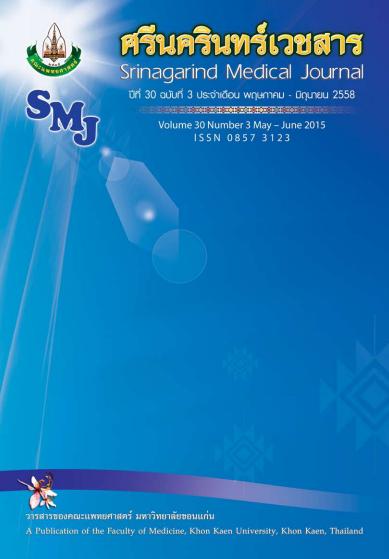Effects of the Protection Motivation Program on Protective Behavior of the High Risk Stroke
Keywords:
Stroke, Protective Behavior Stroke, High Risk StrokeAbstract
Background and objective : Stroke in Thailand is a leading cause of death and also has an increasing incidence. Most of the stroke survivors often have disability. This quasi - experimental research aimed to examine the effects of the protection motivation program on protective behavior of the high risk stroke.Methods: Samples of 68 high risk stroke who visited at Chiang Yuen Hospital were randomly assigned into the experimental and the control groups, 34 patients each. The experimental group received the protection motivation program while the control group received a usual care. Research instrument was the Protective Behavior Questionnaire. The reliability of this questionnaire was 0.82. The data were analyzed by using paired t- test and independent t- test.Results:The results of the study revealed as following: The experimental group had an average score of protective behavior after intervention higher than before intervention (p < .05) and higher than control group (p < .05) and had a significant change in score of protective behavior more than that the control group (p < .05).
Conclusions: Effects of the protection motivation program on protective behavior of the high risk stroke can be used to protect stroke especially in high risk group.




